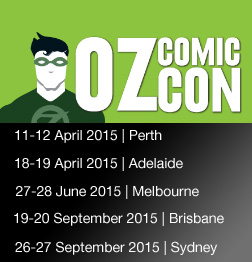It’s all been building to this. The inconsistent series reaches its final issue, and the major surprise is finally revealed. Was it worth the wait?
Writer: Brian Michael Bendis
Artist: Alex Maleev, Bryan Hitch, Paul Neary, Butch Guice,Brandon Peterson, Carlos Pacheco, Roger Bonet, Tom Palmer, David Marquez, Joe Quesada
Publisher: Marvel
Rating: ★★½
There’s been an established pattern the last few years for Marvel events: one major event begets another. It’s a cycle readers of comic books should we well and truly used to, as it is the dark matter that holds serial sales together. There was no reason to suspect that Brian Michael Bendis‘s Age of Ultron would break this trend, having been built up since March as a universe changing event. The final chapter delivers on that promise, of course, so why can’t we shake the feeling that we’ve been cheated somehow?
Perhaps the biggest problem to date with the series has not been with the concept, which promised a solid framework from day one. Indeed, back when the first issue hit stands, we commented that “we have the feeling that this is not only going to be one of the bigger events of the year, but one of the best written as well”. Unfortunately, only half of that statement turned out to be true. Bendis has taken us on a meandering journey across the last ten parts of the tale, establishing a dark and gritty world that was every bit as good as a dystopian version of The Ultimates, then having the characters argue about it for several issues in a row. When the action finally progressed, it departed so significantly from what had come before as to be an almost entirely different series. Bendis pulls hard on the hand brake and hits the accelerator at the same time in this final instalment, spinning the DeLorean beyond a point that even he is able to control.
It is difficult to speak of the rest of the issue without revealing some of the spoilers, and a number of them have already been highly publicised. The constant time-jumping has its pay-offs and consequences, and ultimately the plan that Wolverine, Sue Storm and Hank Pym put in place in their second attempt to right wrongs actually works. However, what that means for the fabric of space-time and the cosmos is potentially irreparable, splitting the minds and loyalties of comic book readers everywhere. Many of the immediate ripple effects will be impenetrable to new readers, but existing fans will know exactly what this means for the near future. If you really enjoyed Spider-Men, be prepared for a whole lot more of where that came from. It would be fairly impressive if the exact ending hadn’t been done by their competitor only a few years ago (*cough* Flashpoint *cough*), not to mention repeatedly over various crises (Infinite and Final ones come to mind) in the last few decades.
The artwork is at times magnificent. Elevating the blockbuster style of mainstream comic art to new heights, you’ll be conflicted as to whether this needs to be kept out in the open or remain inside its black poly bag forever. (Don’t get us started on the poly bag). It’s a veritable who’s who in the art credits (see above), and surprisingly that doesn’t lead to as much unevenness as one would expect. Perhaps the only disappointment artistically is that, unlike Bendis’s Daredevil: End of Days, these artists don’t carve out their own stamp on individual pages, and are merely parts of a homogeneous whole. Regardless, the final “shocking” moments are stunningly rendered, with a colour palette that borrows from and somehow distils every incarnation of Marvel Comics throughout history.
The issue is actually an engaging conclusion in and of itself, and is aimed right at that inner 12-year-old that wants to cheer at the climax of movies. However, that simply reminds us of the misplaced promise we invested in this often unwieldy series, one that lurched from scene to scene only pausing to pat itself on the head in self-satisfaction. Perhaps the most disappointing element to this final issue, and Age of Ultron generally, is that it didn’t accomplish anything more than a gateway to a new title and era for the Marvel U. Effectively the flagship that will launch Avengers A.I., Guardians of the Galaxy #5 and Hunger over the coming months, this is what Avengers: X-Sanction was to Avengers Vs. X-Men. Or what Avengers Vs. X-Men was to half of the new Marvel NOW titles. The issue closes out with an ad for the supplemental part of this final issue, Age of Ultron #10A.I., reading “Submit to the beginning of Marvel’s next evolution”. What other choice do we have?
Agree or disagree? Got a comment? Start a conversation below, or take it with you on Behind the Panel’s Facebook and Twitter!
If you are an iTunes user, subscribe to our weekly podcast free here and please leave us feedback.













2 comments
1 pings
I personally liked this final issue and the poly bag makes for a fun mask (although wearing it does make me kind of woozy). Having said that, the overall story arc would have been better told in five issues as opposed to ten. Of course that would have meant Marvel making $19.95 less per reader.
I think if I’d been wearing the polybag from the star of the series, or chroming on the foil cover, it would have made for a more enjoyable experience.
I agree though: at half the length, it would have been a killer read. Especially if it had stuck to the story it began with. Does that $19.95 include the random AU issues from the rest of the Marvel U?
[…] will come as a relief to those who weren’t overwhelmed with the recent mini-series. In our review for the final issue, we noted that it was “often unwieldy series, one that lurched from scene to scene only […]